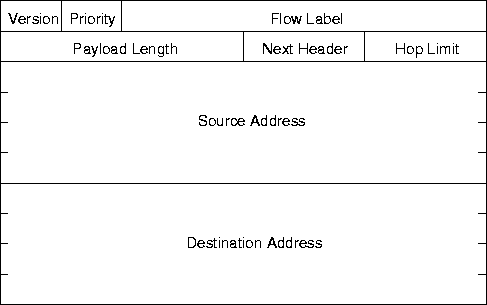IPv6 packet format all field’s description (Internet Protocol Version 6)-
The major difference between IPv4 and IPv6 is that IPv4 is 32 bits long and IPv6 is 128 bits long. So IPv6 can make more IP addresses than that of IPv4. Currently most of countries are using IPv4 because as they are not ready to setup IPv6. IPv6 is the Future IP version which is 128 bits long and have 16 octets separated by – symbol. Whereas IPv4 is 32 bits long which have 4 octets separated by . symbol
Here is the Ipv6 Packet format-

IPv6 has 40 byte of header that contains 8 fields.
1) Version (VER) – Which version of IP you are using and if you are using IPv6 than the value in Version field is 6.
2) Priority (PRI)-PRI field define the priority of packages. OR it is responsible for the event of congestion. The values 0-7 may slow down the event of congestions and in case if values are 8-15 i.e. Real time traffic and sending rate is constant.
3) Flow label- This field is still in under testing or we can say it is experimentally feature which allows a user to make a pseudo connection between the source and the destination.
4) Payload length-How many bytes are follow the 40 bytes of header part. 40 bytes of header are not counted in the payload.
5) Next header- In IPv6 we can add more headers as IPv6 supports the extensions header. Any six header can possible with the datagram.
6) Hop Counter- It is generally used to kill the packets and hop is a numeric value which may decreased up to 0. When value reached to 0 than packet is discarded.
7) Source address- It tells about the source ID and network number. It supports up to 16 bytes of source address in case of IPv6.
8) Destination address- IT tells about the Destination which contains network ID and Host ID. It also supports up to 16 bytes of destination address.
Visit Here-Click Here for IPV4 Header part